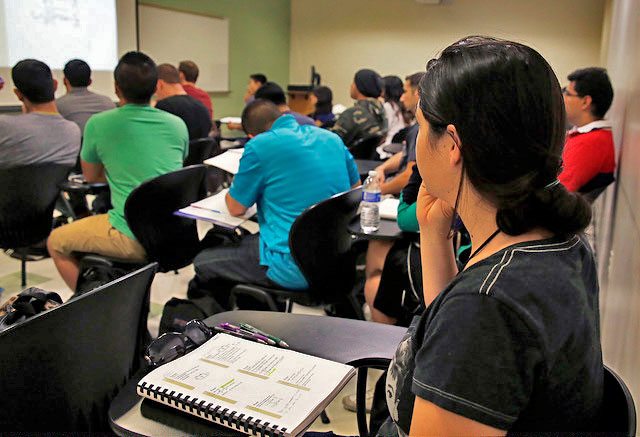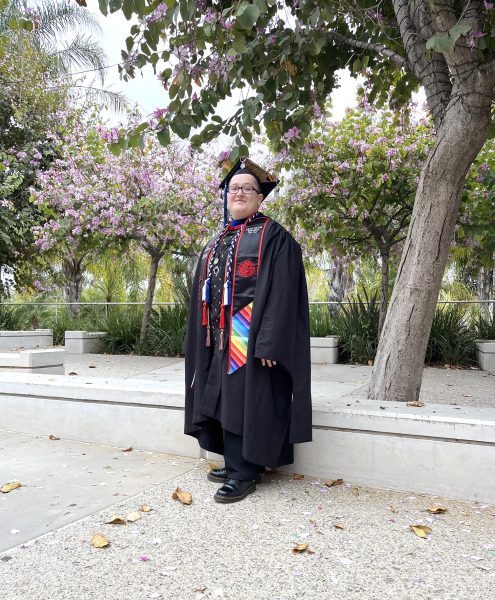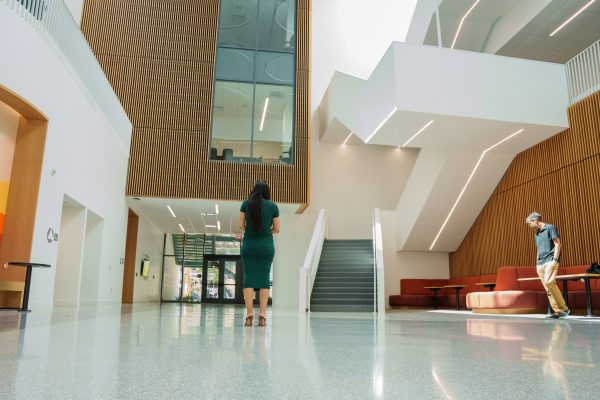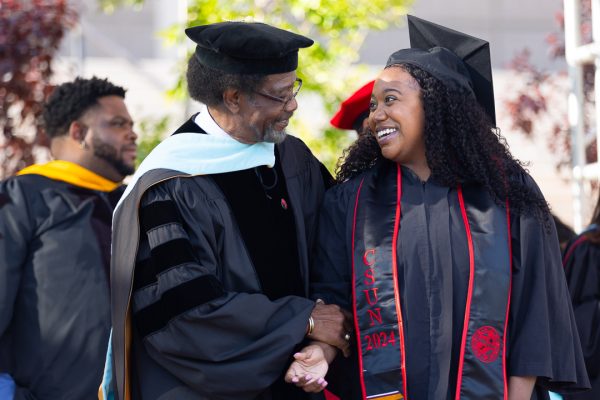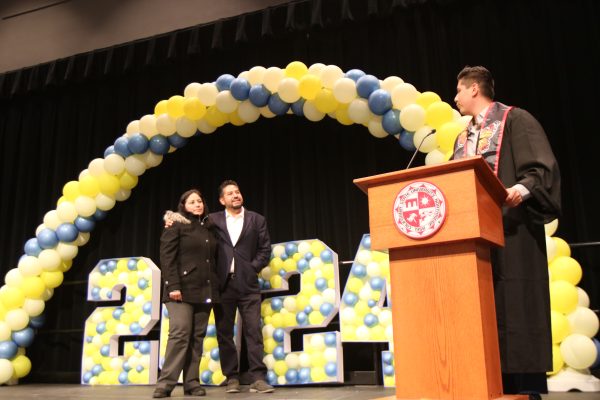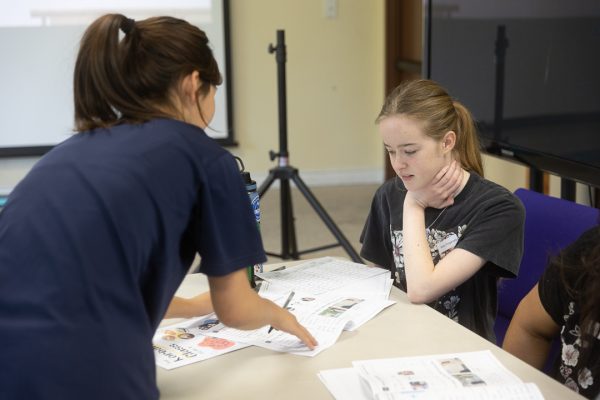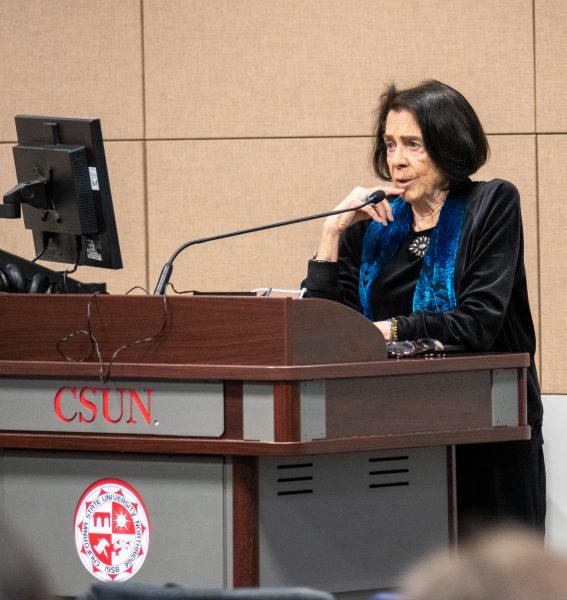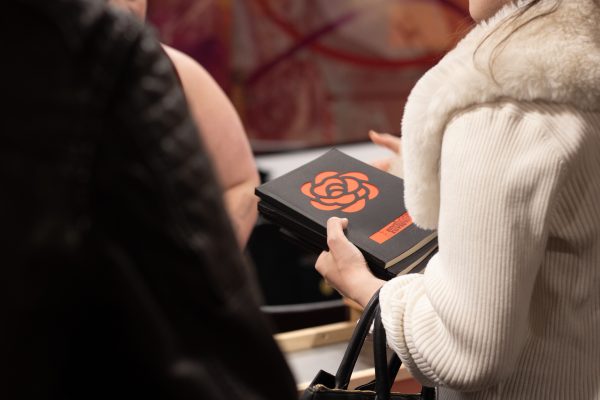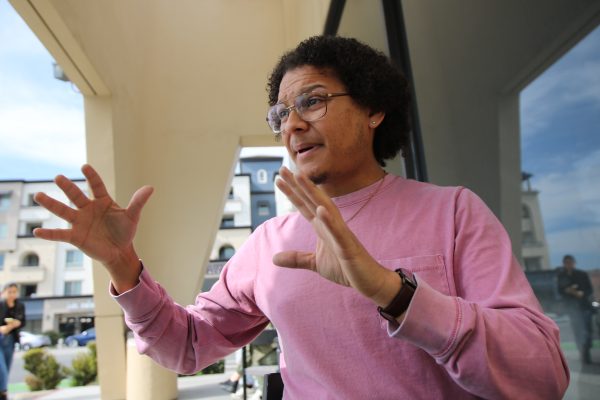A look at CSUN’s COVID-19 protocols for fall semester’s on-campus classes
Classes wont look the same this semester, with limited in-person classes and specific measures in place to ensure everyone’s safety.
August 14, 2020
On June 28, CSUN President Dianne F. Harrison released information regarding on-campus plans for the fall 2020 semester. CSUN has permitted around 230 courses to return to CSUN’s campus after an extensive approval process by the health and safety officers, university deans, an academic affairs task force, as well as the CSU Chancellor’s Office, who all had to authorize the plan prior to it becoming official.
With classes starting on Aug. 24, CSUN has implemented guidelines for on-campus studies, in accordance with health and safety plans recommended by the Los Angeles County Department of Public Health.
The guidelines include a daily screening survey, wearing an acceptable face covering at all times, washing hands and maintaining the six feet social distancing requirement.
Faculty are not required to teach face-to-face classes if they feel distressed about doing so, according to Diane Stephens, associate vice president of CSUN’s department of academic resources and planning.
“Faculty who are scheduled to be on campus and who feel uncomfortable doing so can work with their department chair to determine an alternate arrangement such as, for example, a different professor being assigned to the in-person course,” Stephens said. “No faculty member is required to teach an on-campus class in fall and no student is required to take an on-campus class in fall.”
Class schedules have been structured to incorporate extra time in between sessions for sanitizing high-contact classroom areas, and Stephens said the campus will be well-equipped for keeping up with preventative measures.
“All restrooms will be open and available for hand washing, and sanitized throughout the day with specific custodial staff to perform frequent sanitation. Every teaching laboratory will have a dedicated hand sanitizer station, as well as a surface wipe station, inside each room at the entrance,” Stephens said.
Stephens said the university has installed over 200 hand sanitizer dispensers around the campus, targeting public spaces in buildings that are planned for use in the fall.
Among the on-campus courses to be conducted this coming semester are music classes, which require in-person collaborations, including the orchestra, wind ensemble and jazz band classes.
John Roscigno, music department chair, said his department proposed which classes they wanted to attempt to hold in person, which was then followed by an “extensive negotiation with our upper administration and the state chancellor’s office to ensure that we would be as safe as possible.”
Roscigno said he feels the guidelines CSUN has put in place for in-person classes meet the highest level of safety and protection for all student and faculty personnel.
“The county of Los Angeles and our campus have put extremely strict COVID-19 cleaning and sanitation rules in place,” Roscigno said. “It is so detailed, and makes me very proud of the effort that our emergency operations center has put into this. I feel that I would personally be more safe being in our building than anywhere else in society with the measures our campus is taking.”
The amount of students on campus is expected to be less than 3% of enrollment on campus in comparison with fall 2019 — about 1,000 students — and student and faculty presence will be cyclical in nature.
Journalism department Chair Linda Bowen said that the number of students in a classroom for media courses will vary from three to 15.
“The numbers were derived from the results of occupancy assessments made during walk-throughs of the teaching and lab spaces in collaboration with facilities staff members,” Bowen said. “Basically, students, faculty and staff will rotate daily and weekly attendance, depending on media production shifts per course, and the willingness of students and faculty to come to campus.”
Classrooms will be equipped with floor stickers, hand sanitizer, disinfectant sprays, masks and seating instructions. Further evaluations also helped in establishing how many students could take up each specific amount of classroom seating space.
Both Roscigno and Bowen said they have had lengthy meetings with university groups regarding the procedures for this semester.
Each on-campus staff member must participate in numerous preparation courses for this semester, including an online training on the university’s COVID-19 guidelines, according to Bowen. Bowen said the provost’s office is also hosting a series of “Teaching on Campus in Fall 2020” training sessions.
The university has also developed a contact tracing plan in the event that someone on campus tests positive for the coronavirus. The Emergency Operations Center will be notified if anyone on campus tests positive for COVID-19, according to Dr. Linda Reid-Chassiakos, director of the university’s student health center. If a person tests positive through a test conducted by the student health center, the university will report the case to LADPH.
People who were in contact with a person who tested positive for more than 15 minutes in the two days before or after the person who tested positive began to develop symptoms will be contacted by the student health center.
“These close contacts will be identified confidentially, and contacted discreetly by the Klotz (Student Health Center) Hopkins-trained contact trackers or the LADPH contact tracers, and asked to quarantine for 14 days after their last contact with the ill individual,” Reid-Chassiakos said.
Stephens is confident that staff and students will abide by the protocols the university has put forth.
“Faculty will ensure that COVID-19 protocols are in place to ensure safety at all times during class,” Stephens said. “We anticipate high compliance with safety protocols and are prepared to offer friendly and educational reminders, as appropriate.”
